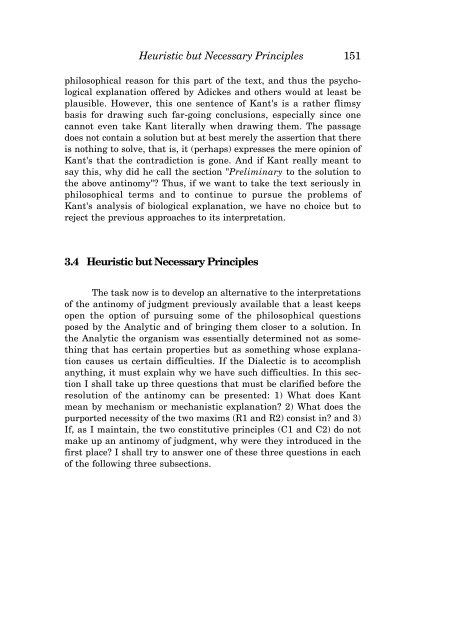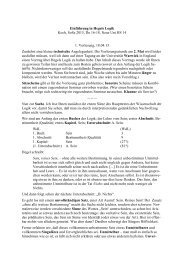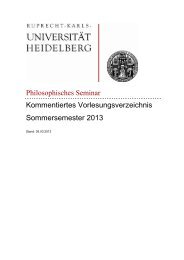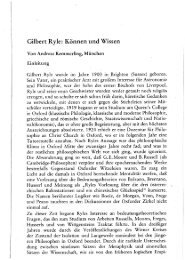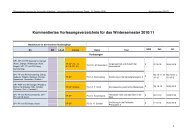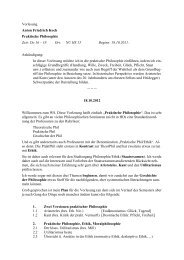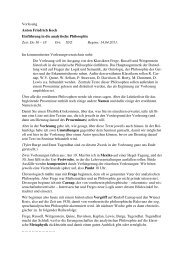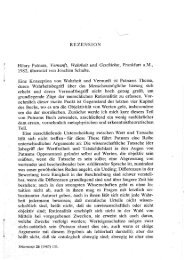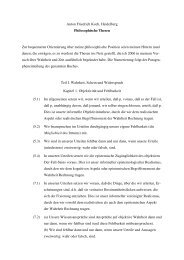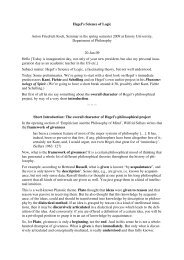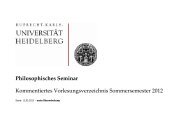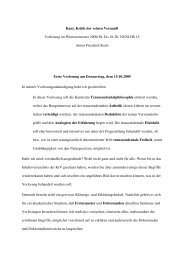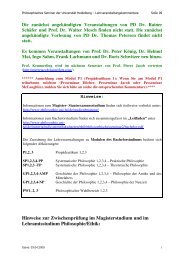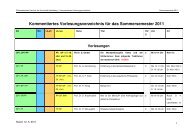KANT'S CRITIQUE OF TELEOLOGY IN BIOLOGICAL EXPLANATION
KANT'S CRITIQUE OF TELEOLOGY IN BIOLOGICAL EXPLANATION
KANT'S CRITIQUE OF TELEOLOGY IN BIOLOGICAL EXPLANATION
Create successful ePaper yourself
Turn your PDF publications into a flip-book with our unique Google optimized e-Paper software.
Heuristic but Necessary Principles 151<br />
philosophical reason for this part of the text, and thus the psychological<br />
explanation offered by Adickes and others would at least be<br />
plausible. However, this one sentence of Kant's is a rather flimsy<br />
basis for drawing such far-going conclusions, especially since one<br />
cannot even take Kant literally when drawing them. The passage<br />
does not contain a solution but at best merely the assertion that there<br />
is nothing to solve, that is, it (perhaps) expresses the mere opinion of<br />
Kant's that the contradiction is gone. And if Kant really meant to<br />
say this, why did he call the section "Preliminary to the solution to<br />
the above antinomy"? Thus, if we want to take the text seriously in<br />
philosophical terms and to continue to pursue the problems of<br />
Kant's analysis of biological explanation, we have no choice but to<br />
reject the previous approaches to its interpretation.<br />
3.4 Heuristic but Necessary Principles<br />
The task now is to develop an alternative to the interpretations<br />
of the antinomy of judgment previously available that a least keeps<br />
open the option of pursuing some of the philosophical questions<br />
posed by the Analytic and of bringing them closer to a solution. In<br />
the Analytic the organism was essentially determined not as something<br />
that has certain properties but as something whose explanation<br />
causes us certain difficulties. If the Dialectic is to accomplish<br />
anything, it must explain why we have such difficulties. In this section<br />
I shall take up three questions that must be clarified before the<br />
resolution of the antinomy can be presented: 1) What does Kant<br />
mean by mechanism or mechanistic explanation? 2) What does the<br />
purported necessity of the two maxims (R1 and R2) consist in? and 3)<br />
If, as I maintain, the two constitutive principles (C1 and C2) do not<br />
make up an antinomy of judgment, why were they introduced in the<br />
first place? I shall try to answer one of these three questions in each<br />
of the following three subsections.


